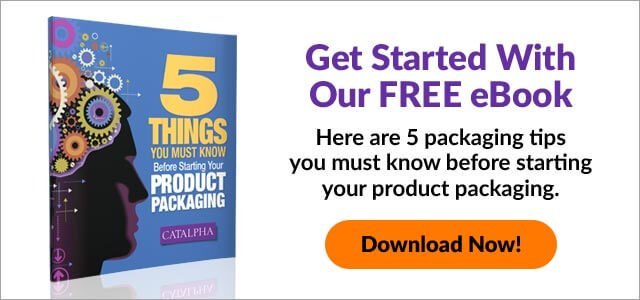An Explanation of Packaging Types and Pricing
Hi. My name is Don Keller and, today, I'm going to talk to you about a question that gets asked of us quite often and that is, How much is my package going to cost?
Well, that's a pretty big loaded question. So, I'm going to break it down and show you why things cost what they cost, and some of the questions that we're going to ask you when you bring your product to us and say, "Don, I need to have this package, got to get it on the shelf, and I need to have it as economical as possible, and I need it by Tuesday."
Okay. So, let's go down the list.
The first thing we've got is SIZE.
As you can imagine, size has a lot to do with the cost of a package.
A small product can be put into a small package, which is going to cost less to produce than a much bigger product that has to go into a much bigger package.
We have a client that wants to do pillows. Pillows take a lot of room up on the shelf. As you can imagine, it's going to take a lot of material to do that. So, that's the first thing that you've got to think about.
Okay, well I know my product's not that big, or it's awkward, or it's got to go -- I need to have it presented a certain way. Well, size is one of the first things that we got to start talking about.
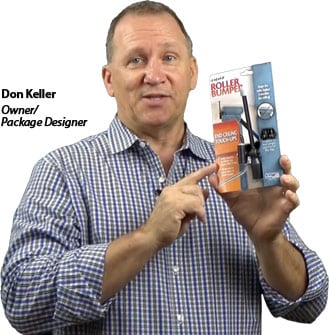
Want Us To Do It All For You?
Best Package For You - We’ll determine the best type and size of package that fits your product and your budget.
Design - We’ll create a design that will stand out from your competition.
We’ll Get it Printed - Don’t be left with a pretty design and nothing else. We can also print your package so you can get it on the shelf and sold!
Number two on the list is QUANTITY.
Now, a lot of people want to do just enough packages to cover whatever particular product order they might have just had or they're looking for a test size.
Well, we can do that for some types of packages.
I have to tell you that not every type of package can be done in small quantities. But, we always try to suggest quantities, or sizes, or types of packages that are going to fit your budget. So, quantity has a lot to do with it.
So, let's hope that, when you come to us, that your quantity can be at least 1,000 pieces, hopefully a little bit more because you're going to get a better per piece cost.
But, if you're doing much smaller quantities, they're might be a way to do it, but your per piece cost is probably going to be a little higher than if we actually produce in quantity. So, that was number two.
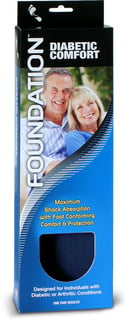 Okay. Let's go over some of the different types of packages and what they can do for your particular product.
Okay. Let's go over some of the different types of packages and what they can do for your particular product.
First on the list is PAPERBOARD.
Here's an example of a paperboard package (see Foundation package image). In this case, these are wrapping or produced showing insoles here. This particular paperboard was done on approximately 14 point board here.
These can hold lighter products. So, we can't really put -- if you had a product that was very heavy, we wouldn't want to be putting it into something like this. It's just not going to work. So, the weight also has something that could come into play with your particular product as well.
But, in this case, these are insoles, fairly light. This paperboard works well. It can be peg hooked. It's going to display nice. It prints nice as you can tell and can be done for the smaller quantities, at least 1,000 pieces.
Here's another example of PAPERBOARD. Again, this is a smaller product. I don't have the actual product in here, but you can see that we have a window cut it in here as well so somebody could actually touch the product.
We call these poke holes, so that somebody could stick their finger, and it has a lot to do with how your product is presented, and it might work well for your particular product. But, again, this is a lighter product, worked well for paperboard. Again, it could be done at lower quantities.
Here's another paperboard product package. And this was also done for -- this was a fairly light product. Again, this is a tea product, so tea does not weigh very much. But, it needs to have a nice presentation on the shelf. It needs to set next to the competitors that are national brands that have a lot more money to spend on their package than you possibly do.
So, paperboard, as you can see, that's a nice presentation. It prints very nicely. It works well even at smaller quantities.
Another paper example here is CORRUGATE.
Now, this is a corrugate box and we're getting into a much more expensive type of package. Corrugate works well, as I've mentioned, for larger products that have weight to them.
So, for the most part, if you've got a product and you've got to get it shelf ready, which this particular product was, be prepared to do a fairly high quantity because it's not going to be worth trying to do small quantities for a printed corrugate answer. In this case, this was litho laminate job, meaning there was a litho sheet, a paper sheet, that was then laminated to the actual corrugate here, and then it was cut down, folded, and then of course product inserted.
So, corrugate can be a very nice solution, and it looks great, and it works best for heavier and bigger products. But, it's more expensive. So, keep that in mind if your product is large.
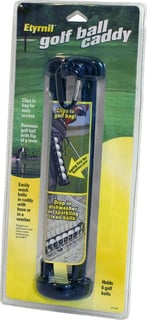 Okay. Next on the list is a CLAMSHELL or a BLISTER.
Okay. Next on the list is a CLAMSHELL or a BLISTER.
In this case, this is a clamshell. A clamshell gets its name because it's actually two pieces of plastic that usually have some type of a hinge at the bottom or one side, and then it opens up, and you can put the product in. That's where the clamshell name comes from.
Clamshells are expensive to produce. There's no two ways around it.
The reason being is that you need to create a mold, and that mold has a fair amount of expense to it, and these are just startup costs. Then, of course, you need to actually form the plastic over the mold, another part of the job, and you need to do those in higher quantities. So, it can be done and I don't want to discourage you from doing that. I just want you to be prepared that this is the more expensive route to go.
Another plastic answer here would be a BLISTER PACK.
Now, this is again plastic and it does require a mold to create this type of blister around your product because it is custom. But, it's a smaller piece of plastic. Ecologically, that may be more appealing to you.
It's also attached to a paper backer. So, this is something that you normally couldn't do on your own, just like the clamshell. Paperboard, those are things where you can take those, and you could put your product in, and then you could make them shelf ready. That's something you could do in your office.
But, for a blister and a clamshell, it requires heat, it requires a press. Those are just things that just aren't feasible for somebody either getting started or just doesn't have the type of machines in their office.
So, another type of CLAMSHELL, which could be a little more inexpensive for you to get started with, is a stock clamshell. That's what this particular product is. We did this for a client where they wanted to be in a clamshell so the people could see their product because that was part of the sale of the presentation for their product, that people needed to see it. It was lightweight. This particular product also fit this clamshell pretty well. As you can see, it pretty much is -- top to bottom, it fits almost exactly.
Now, these clamshells, they don't come in every different size. So, sometimes, we can suggest you do this. Sometimes, not. It just kind of depends on your particular product and if this is the right solution for you. But, this had a custom insert which made this look like a custom piece. From beginning to end, it looks like anything out there right now. It would stand next to their competition even if they were a national brand.
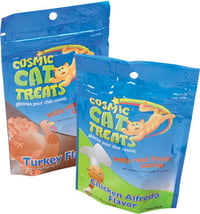 Next on the list is a STANDUP POUCH.
Next on the list is a STANDUP POUCH.
This is standup pouch. This is a custom standup pouch, meaning it's been printed both sides full color all the way to the edges, and then of course was trimmed. But, there are some stock standup pouches out there that could work for you. They normally are some type of a one color, of course, bag and then we customize it with a label. Now, that can look very custom. It can look very nice and could look just as good as a lot of the competition out there.
But, if you're looking for something at a much higher end, that's this type of a standup pouch. Now, these require some higher quantities. 5,000 and 10,000 usually is where these start. So, again, if you've got a product that you think has to go into some kind of a bag that needs to contain the air, this is the way to go.
Then next on the list is a less expensive route, which is a HEADER CARD.
Now, header cards is like one of the least expensive ways to go to package your product. As you can see, it's fairly simple. It's a printed card folded over. It's got a peg hook on it and it's got a bag attached. Usually, these are stapled. Now, as you can imagine, it's an okay presentation and it works well for some particular products. But, it's not going to work for every product.
If you've got a product where you've got a very slim margin, this could be the answer for you. So, your product, again, may fit and present nicely in a bag, or it may fall to the bottom of the bag. Those are things we need to consider when we're suggesting a header card. Again, but this is usually the least expensive way to get started.

Want Us To Do It All For You?
Best Package For You - We’ll determine the best type and size of package that fits your product and your budget.
Design - We’ll create a design that will stand out from your competition.
We’ll Get it Printed - Don’t be left with a pretty design and nothing else. We can also print your package so you can get it on the shelf and sold!
Here's another example of a HEADER CARD. This was done for this particular product because it worked well because it already had, more or less, a built-in tail to it. So, it fit well through this particular card, the way this was designed. But, again, this could be done in lower quantities.
This is a little more expensive because of the size, where the size comes into play. So, header cards are a good way to get your product out in the retail situation at a less expensive cost.
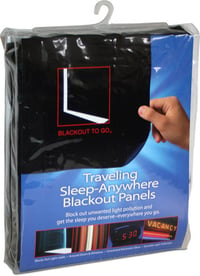 So, one other type of bag here or type of product that could be done for you is the VINYL BAG.
So, one other type of bag here or type of product that could be done for you is the VINYL BAG.
This is a product that could be custom, but in this case it was stock. So, meaning that this bag was already produced. It's at this size. This particular bag, the product fit nicely into it. We customized it with an insert.
Again, it worked well for this particular product because it didn't need to be seen. I mean you could see the product. You could even open it if you wanted to and look inside. But, this particular bag has a peg hook. It is snapped so that the product could go back in for storage. So, this could be a good solution for a number of clients. It just depends on your product.
So, that covers quite a few different types of packages, not all of them, but quite a few. And I know you're going to have more questions about packaging design, but hopefully that gives you a pretty good example of the types of packages that your product could go into. So, if you're ready to take your packaging to the next level, give us a call.
See our new video about the cost of product packaging
Here's another blog post you may find interesting:
Follow This 10 Step Process To Create Packaging Design That Sells Your Product
Leave us a note below and tell us what problems you are running into while packaging your product.



